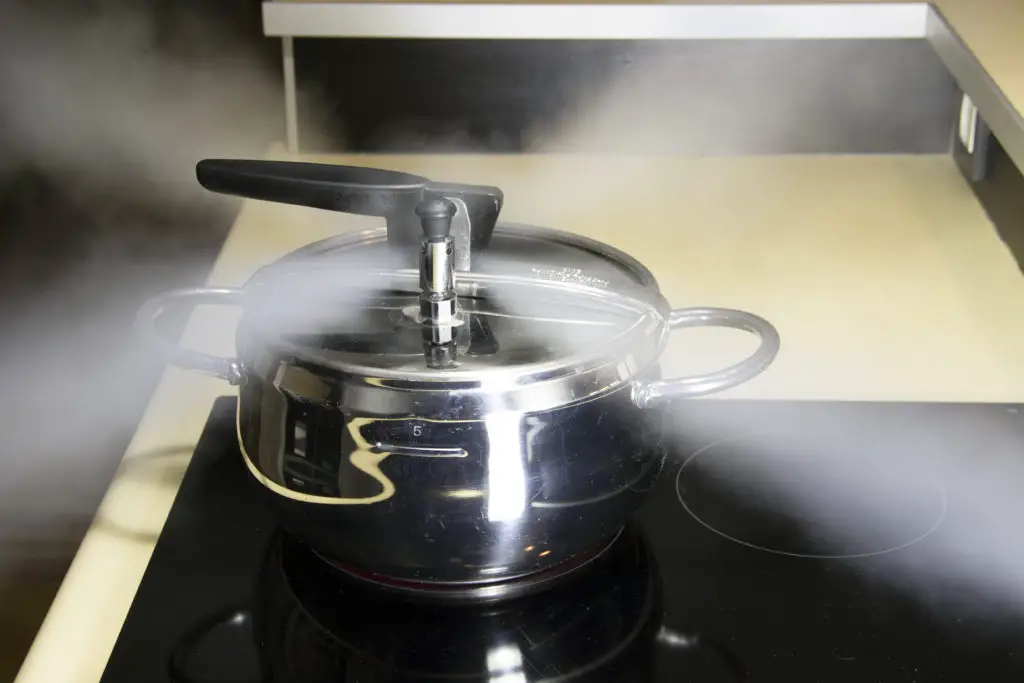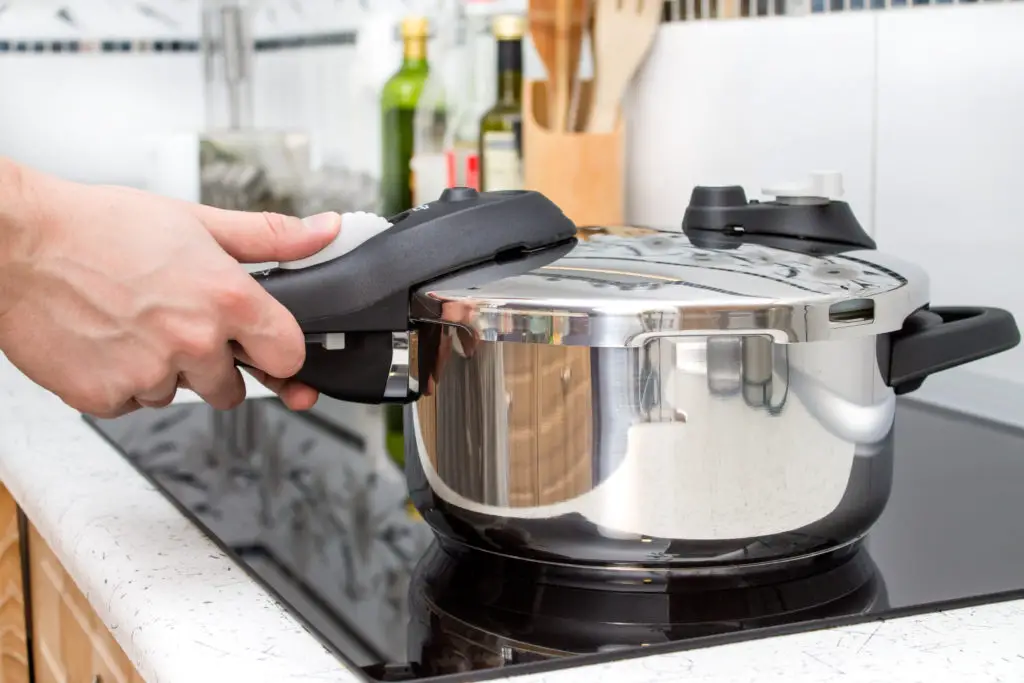
You may have avoided using a pressure cooker for years, out of fear that you’d end up with an exploding pot that could cause serious personal injury and plenty of damage to your kitchen. But these appliances are much safer than they were when they were first introduced in the late 1930s, and when they had their heyday back in the 1950s. These days, every model on the market is now loaded with a variety of safety features that make these appliances easy and completely safe to use.
There are a lot of myths regarding are pressure cookers dangerous or not. Back in 1938 when the first pressure cookers were introduced, they were very popular because they provided a convenient way to prepare meals for working families.
But in the past, the pressure cooker was not as safe as it is today. Over several decades, there have been many improvements made to the basic design that have made pressure cooker safer to use than ever.
Are pressure cookers dangerous? Back in the 1950’s they were. In fact, many models did not come equipped with an alternate route for the steam to escape, so if the main valve was clogged, the pot would explode under pressure. These days, every model must undergo extensive testing in order to be approved for sale.
Modern appliances now come with a variety of safety features in place, including multiple routes for the steam to escape should one valve become clogged. Of course, it’s still important for you to stay on top of routine maintenance to ensure your pressure cooker remains in excellent working order. But you’ll no longer have to worry about flying lids and exploding pots thanks to the many innovative safety features you’ll find on the leading models.
Table of Contents
Can a Pressure Cooker Explode?
The first pressure cookers were anything but safe to use. Many were low quality and inferior compared to today’s models. These ancient models did not come with any safety features so exploding pots and flying lids, damaged kitchens, and serious injuries were all too common. Fortunately, these days they don’t make them like they used to. In the past, the pressure cooker had just a single weighted pressure regulator that was prone to clogs.
Since there was no alternative route for the steam to escape, the pressure was able to build. Like any type of system that’s under intense pressure, the weakest component tends to fail. Lid latch failures were also possible with enough pressure. This would often result in a flying lid.
Aside from the gasket or valve failing, hot liquid would spew out of the hole scalding anyone and anything in its path. Because of its history, many people have steered clear of pressure cookers in fear of exploding pots and flying lids.
Modern Designs

Since these pots were prone to exploding, the pressure cooker’s popularity took a dip. Most people tossed out their pots and didn’t look back. In the late 1970s, major design changes were implemented to improve safety. To improve performance the main valve was totally redesigned. In addition to the redesign came the secondary relief valve.
The addition of lid locks and latches was another important change. This new design prevented the lid from opening when it was under pressure. This also eliminated accidental openings which could lead to serious injury. These new safety features totally changed the pressure cooker design for the better and boosted sales.
These days, most pressure cookers come with three to four safety valves. This way, if one or two of the valves become clogged with debris at the same time, the steam will still have an alternate route for the pressure to escape.
A large cutaway window located on the edge of the lid is another potential route for the steam to escape and it’s found on some models that are equipped with a gasket. Pressure build-up can cause the ceiling gasket to blow which occurs if the main and over-pressure vents fail at the same time.
Another feature found on many modern models is the dual pressure regulator, which comes complete with a counterweight and dial gauge for a more accurate pressure level regulation.
Most models will come equipped with a lid lock or interlocking lid, complete with pistons that are spring-loaded to prevent the lid from being opened until the external and internal pressures are equal.
For many pressure cookers, if not every safety mechanism is correctly engaged or aligned, the pot will not be able to pressurize its contents. Because of this, it’s very important to keep all of the components clean. To learn more, you can stop by and read my guide on how to clean a pressure cooker efficiently.
More Manufacturer Guidance
These days, most manufacturers will include a very detailed user manual that will walk you through how to use, clean, and operate your pressure cooker safely in order to prevent serious injuries. These new comprehensive owner’s manuals will also provide clear instructions for safe use, in addition to recipes, and recommendations to online tutorials.
Manufacturers have recognized that it’s more important than ever to teach consumers how to cook with a pressure cooker safely. Considering there are so many fail-safes in place in the event that one or two of the valves become clogged, using a pressure cooker these days is nowhere near as dangerous as it used to be.
Click here to read my article 3 Finger Licking Vegetarian Pressure Cooking Recipes for You, to get a better idea of just how versatile modern pressure cookers are.
Safety Testing
Pressure cookers must meet certain safety standards. Because of this, models will undergo third-party testing before they’re approved for sale. This is a huge plus for the consumer who is on the fence about purchasing their first pressure cooker.
To learn more about the types of features available, how these appliances work, and how to choose a model that’s right for you and your family, stop by and read my pressure cooker buyer’s guide.
How to Use a Pressure Cooker Safely
The best way to stay safe while using your pressure cooker is to read the instruction manual from cover to cover. Basic safety precautions will still apply, regardless of how many safety features your pressure comes with.
Never expose your hands, arms, or any part of your face to the hot steam. This steam is extremely hot and can cause serious injury. Always wear oven mitts, or protective gloves when handling the pressure cooker right after use.
Before use, make sure you check all the parts and ensure they’re clean and in good working order. You’ll want to check that the wingnuts, clamps, gaskets, valves, and other components are in good condition and free from debris and grime. It’s also smart to give your pot a test run in order to determine if the seal is working properly.
If you’re using an older pressure cooker, I would seriously consider purchasing a new model for it’s faster, more efficient cooking process and all the latest safety features. If you’re looking for a beginner-friendly pot, I recommend the Prestige 4L Deluxe Alpha pressure cooker, which is easy to use and maintain and priced affordably.
When checking your pressure cooker, make sure that you use a master gauge testing unit to test the gauges for accuracy. You can head to your local household appliance center or hardware store for testing services. Another option is to purchase a test gauge directly from the manufacturer.
Final Thoughts
Fortunately, today’s pressure cookers are safer to use than ever. Even for the amateur, today’s modern pressure cookers are easy to use, even with their complex lid locks, precise gauges, and the variety of pressure release plugs. Are pressure cookers safe?
These days they are, but decades of poorly designed pots and a lack of safety features have given these appliances a bad rap. So, if you have a vintage model that’s been in the family for several years, now is the time for an upgrade.
Don’t allow the pressure cooker’s bad past prevent you from giving a modern pot a try. These devices are easy and safe to use and provide a great way to prepare a meal for the whole family. Just remember, it’s very important that you follow the instructions in the user’s manual carefully, take the pot for a test run, become familiar with the different parts, how they work, and how to clean them, to keep your pressure cooker in perfect working order.
Originally posted 2019-11-16 15:36:41.


![7 Best Island Punch Pucker Substitutes [ALMOST Identical]](https://wowcookery.com/wp-content/uploads/2022/05/island-punch-pucker-90x75.jpg)
![10 BEST Luxardo Bitter Bianco Substitutes [ALMOST Identical]](https://wowcookery.com/wp-content/uploads/2022/05/luxardo-90x75.jpg)






